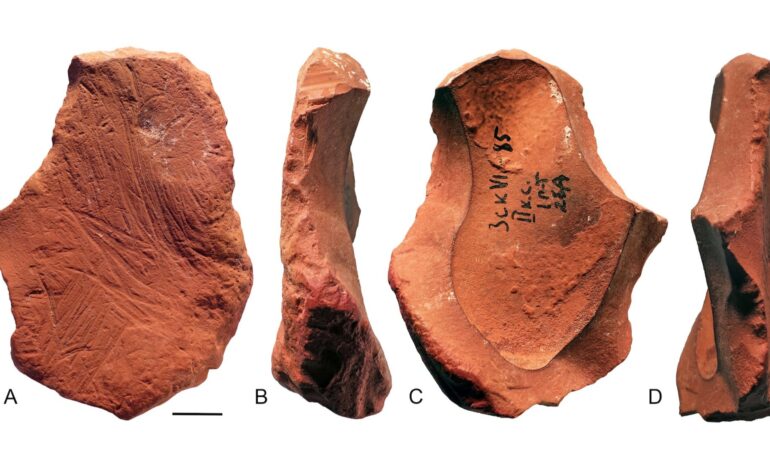Neanderthals Crafted Pigment Tools for Artistic Expression

Recent discoveries challenge long-held perceptions of Neanderthals, suggesting these ancient hominins were more creative than previously believed. A study published in the journal Science Advances reveals that Neanderthals engaged in artistic activities, utilizing pigment materials to create tools potentially for coloring.
The research team, led by Francesco d’Errico from the University of Bordeaux, conducted an extensive examination of archaeological sites in Crimea and Ukraine. They unearthed 16 pieces of ochre, a natural pigment dating back as far as 70,000 years. Ochre, composed of iron-rich minerals, has a long history of use in various ancient civilizations for artwork, tanning animal hides, and other practical applications.
Significant Findings from the Field
Upon analysis using scanning electron microscopes and portable X-ray scanners, many ochre fragments exhibited signs of use, including polished and engraved surfaces. Notably, one piece of yellow ochre was identified as being shaped into a crayon-like object. This specific fragment demonstrated signs of repeated sharpening, indicating it was not merely discarded but skillfully crafted as a tool for artistic expression.
The authors of the study concluded, “While practical applications (e.g., hide processing) remain plausible for other specimens, the evidence supports symbolic use among some Crimean Neanderthals.” They emphasized that these findings suggest that certain ochre materials were likely involved in symbolic activities, pointing to a cultural dimension previously underestimated in Neanderthal behavior.
Cultural Implications and Human Connection
If Neanderthals did engage in symbolic activities, it implies they shared cultural traits with contemporary Homo sapiens. The ability to create tools for artistic expression reflects a level of cognitive complexity and social behavior that aligns closely with the early modern human experience.
Despite these revelations, it is essential to recognize the limitations of such findings in the broader context of evolution and survival. The creativity exhibited through these pigment tools did not translate into enduring success in the evolutionary race. While both early humans and Neanderthals may have enjoyed the act of creating art, only Homo sapiens persist today, continuing to engage in activities like coloring.
This new evidence not only reshapes our understanding of Neanderthals but also invites reflection on the cognitive and cultural developments that have defined the human lineage. As research continues to uncover the complexities of our ancient relatives, it becomes increasingly clear that the story of humanity is rich with shared experiences, creativity, and connections that transcend time.






